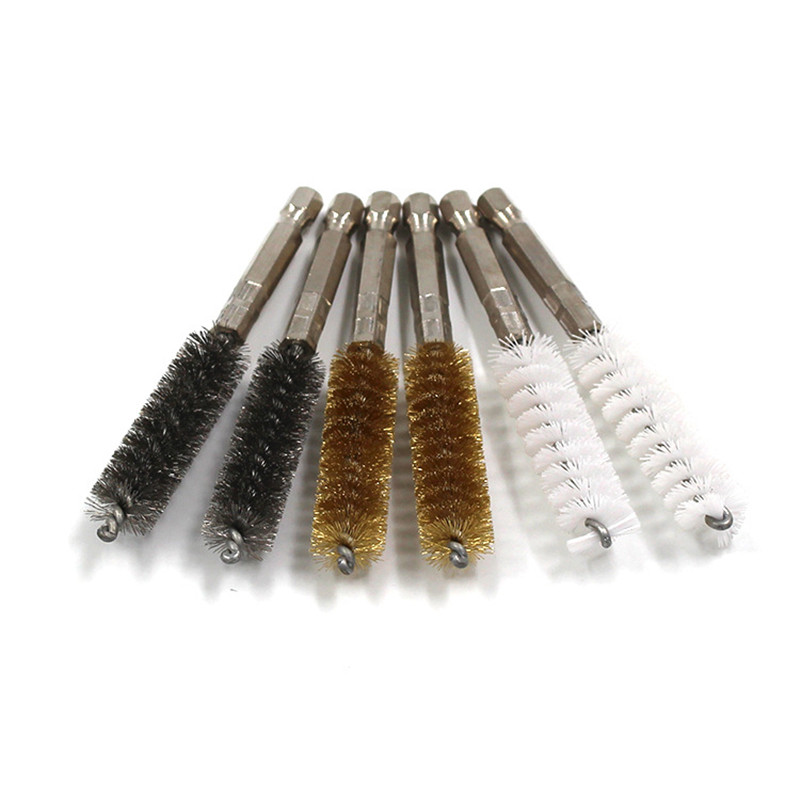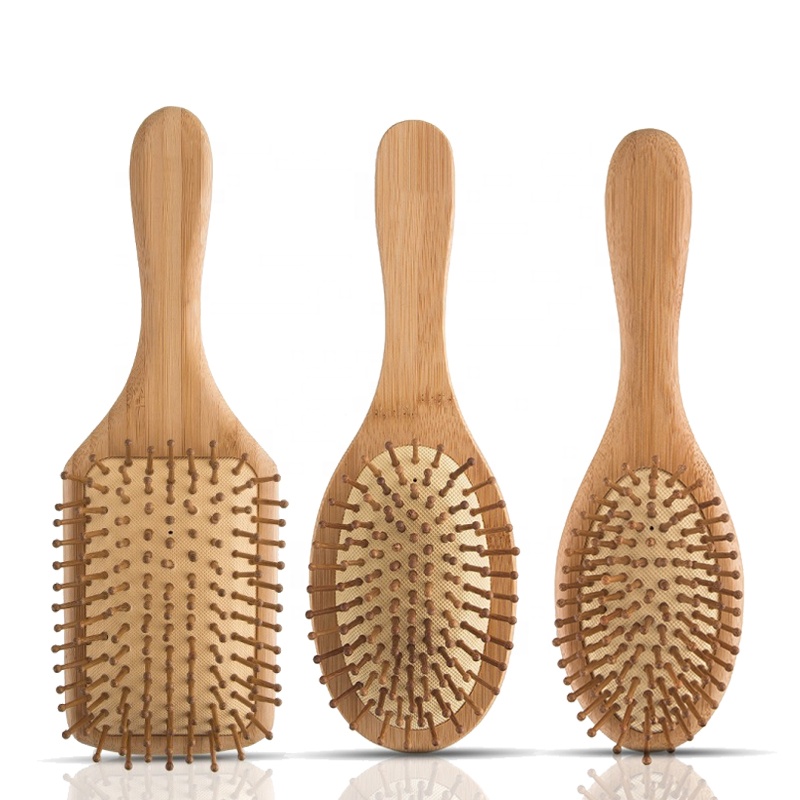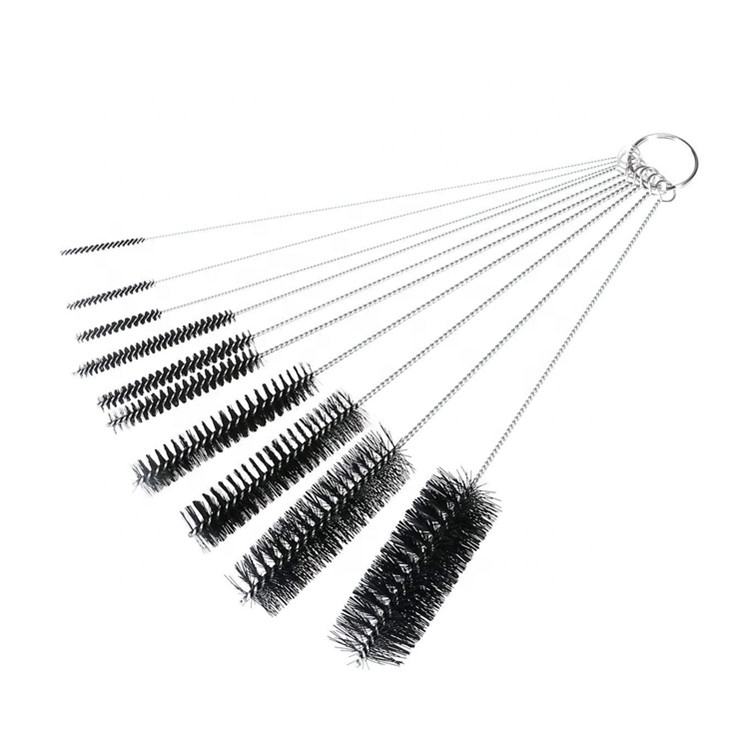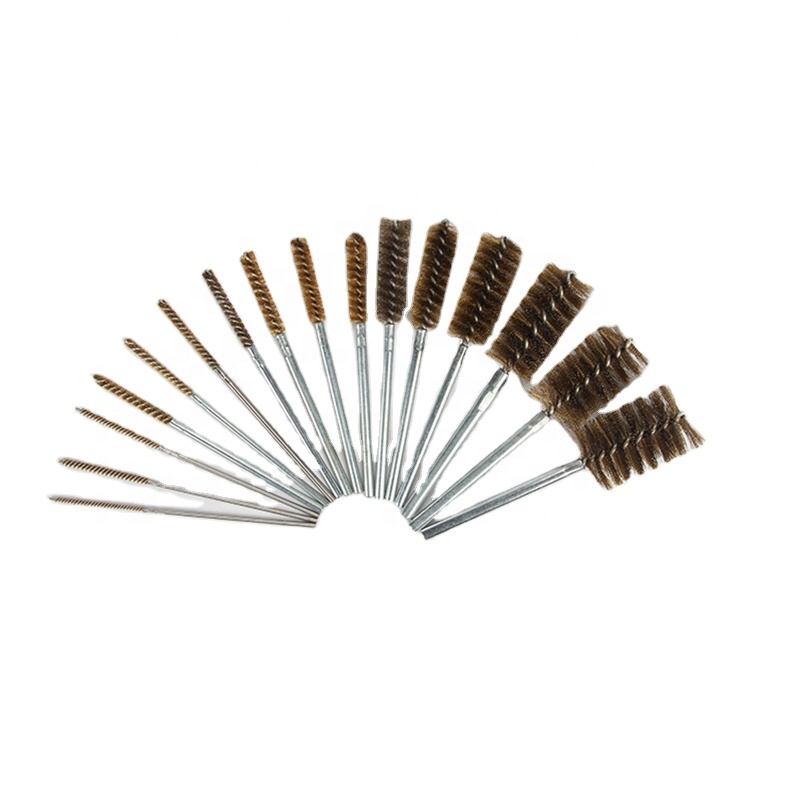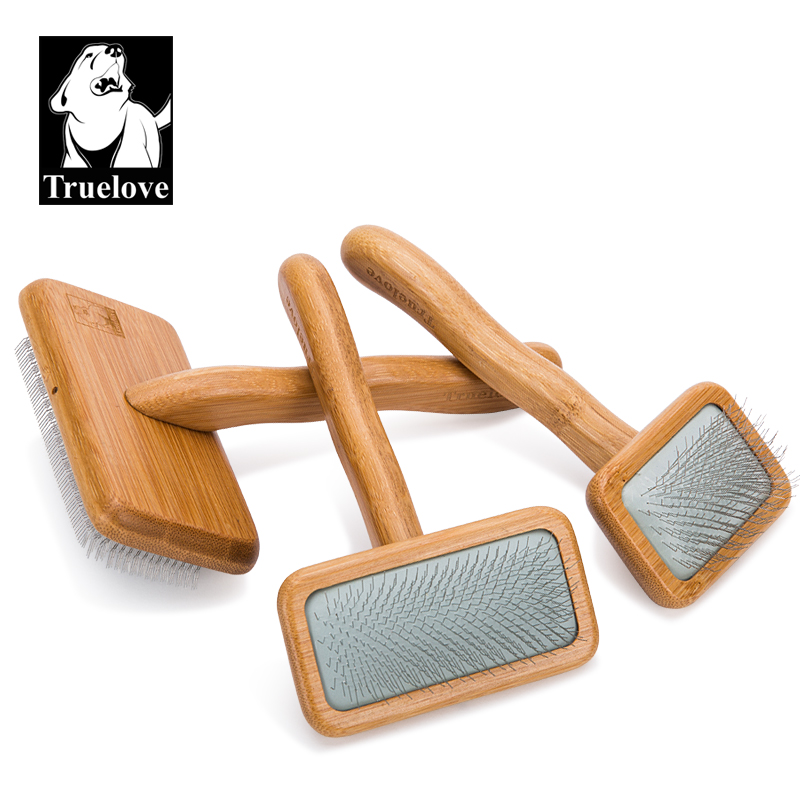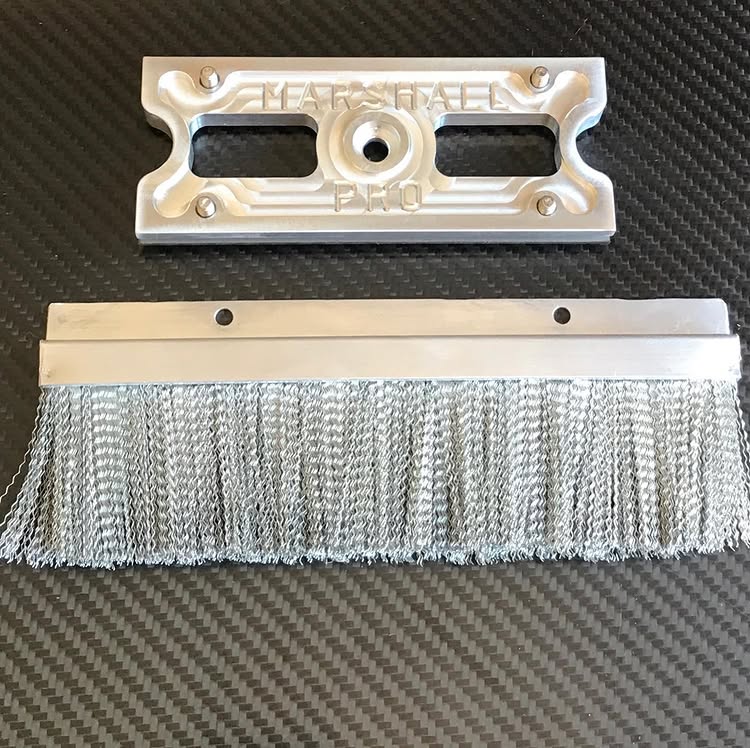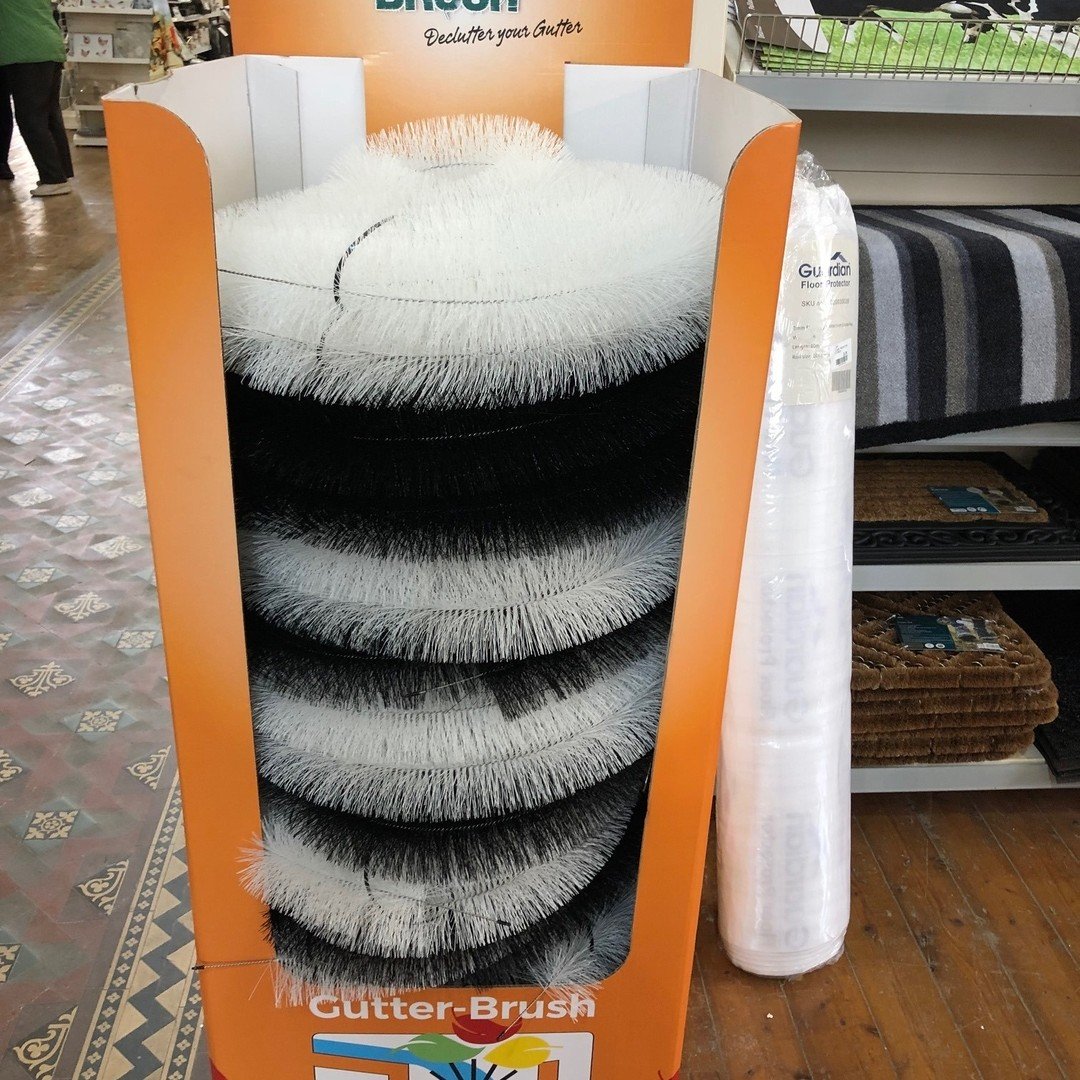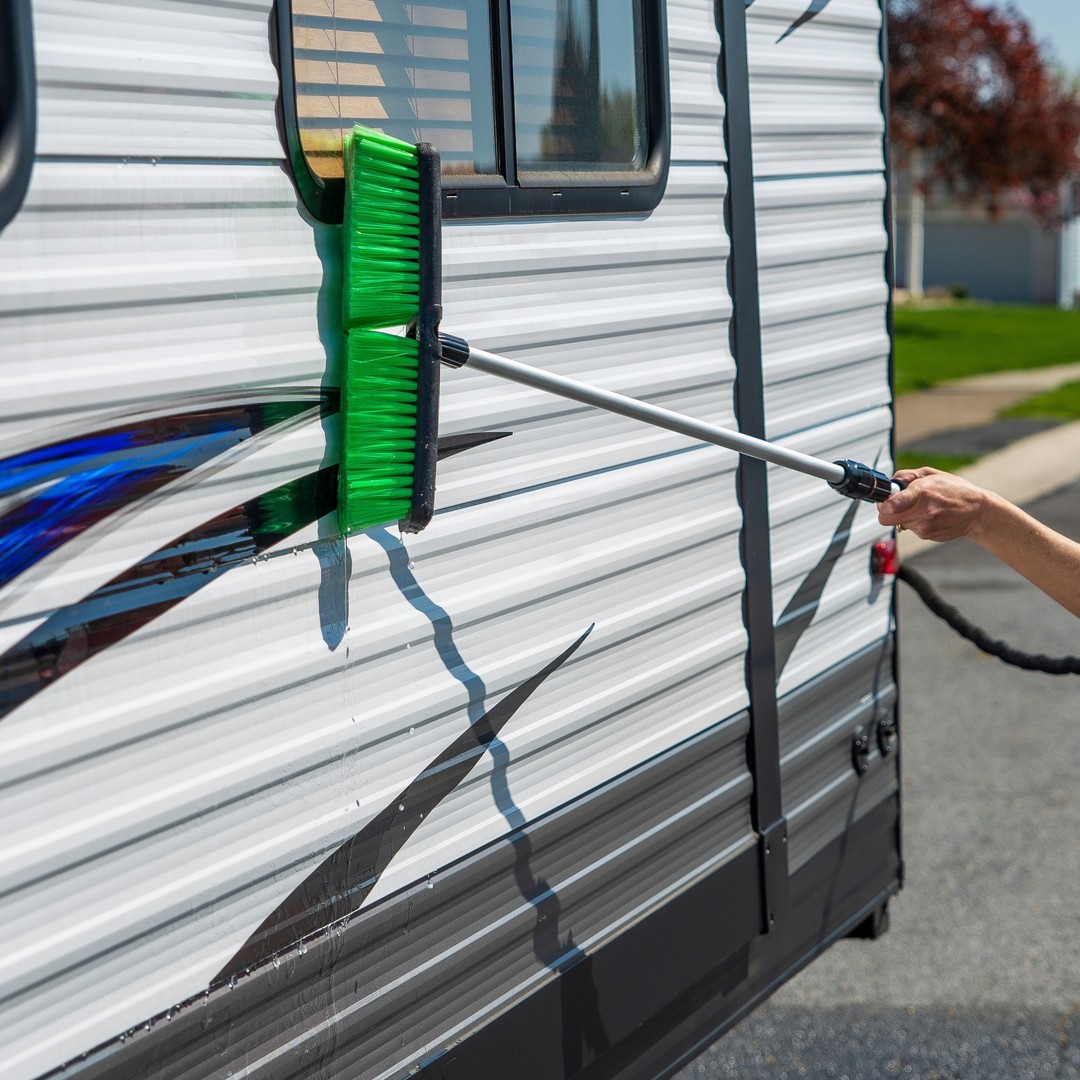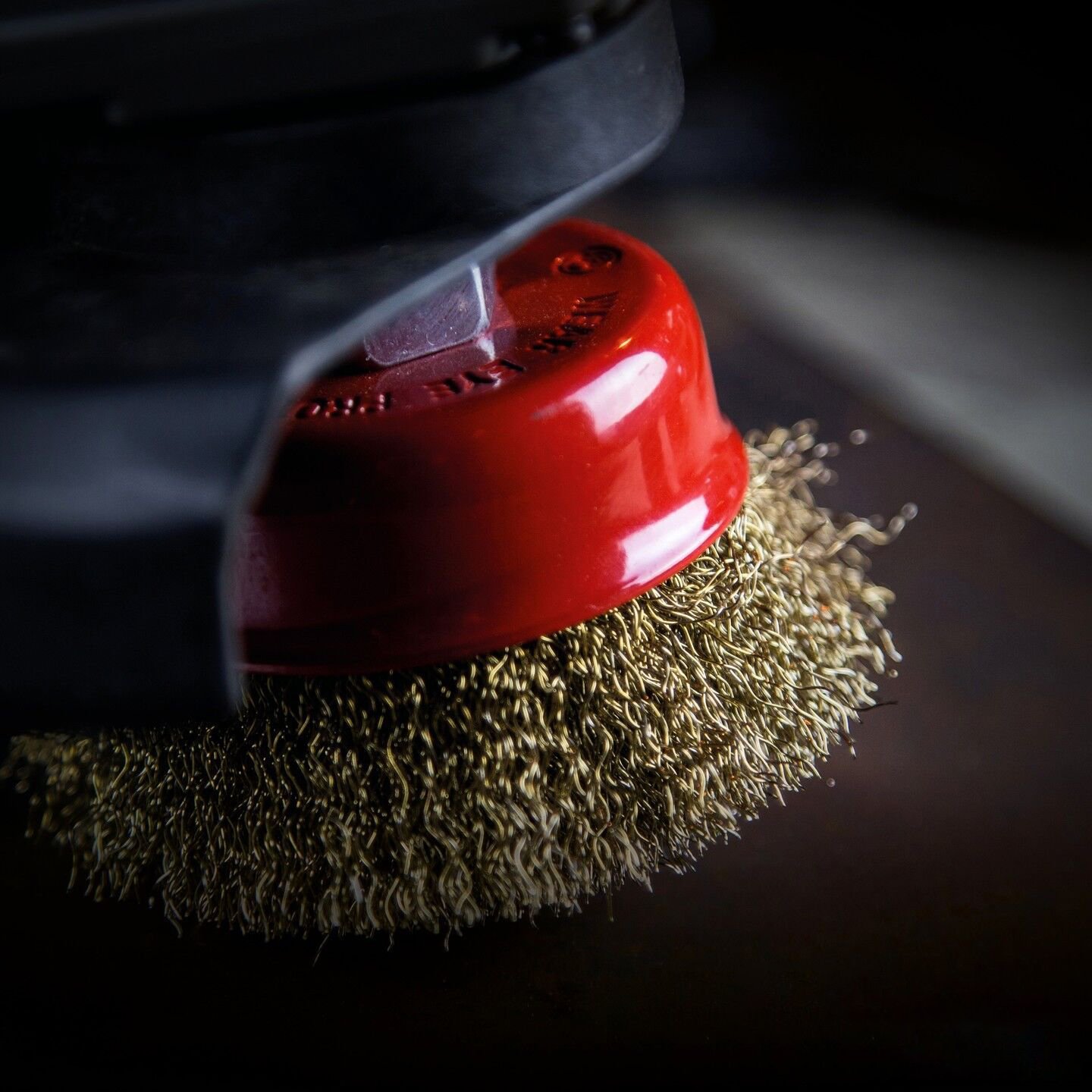Turinys
1. Introduction to Wire Brushes in Car Detailing: Their Importance and Benefits
Achieving flawless results in car detailing requires attention to every detail, and some areas of your vehicle need that extra care. While high-quality pre-wash products, snow foams, and shampoos do an excellent job in general cleaning, there are specific parts of your car that need more focused treatment. This is where car detailing brushes come in, particularly wire brushes.
Wire brushes are highly effective at reaching stubborn dirt and grime in tight spaces where conventional cleaning tools can’t reach. Whether you’re working on your vehicle’s wheels, engine bay, or intricate interior details, wire brushes offer a precision cleaning solution. In this guide, we’ll explain what wire brushes are used for in car detailing, their types, how to use them effectively, and why they are essential tools for any detailer.
2. Understanding Wire Brushes in Car Detailing
What Is a Wire Brush?
Wire brushes are specialized cleaning tools used in car detailing to clean surfaces that require more intensive scrubbing, such as removing rust, baked-on grime, brake dust, and heavy dirt accumulation. These brushes feature bristles made from steel or other strong metals and are particularly useful for tough cleaning jobs that other brushes or cloths can’t handle.
Wire brushes are designed to tackle the most difficult areas, providing precision and ensuring that your car is left spotless without causing damage. However, their strength and aggressiveness mean they should be used selectively and carefully, particularly on certain surfaces of your car.
When to Use Wire Brushes in Car Detailing?
Wire brushes are perfect for tough, built-up dirt that may be found on car components like wheels, exhaust pipes, and engine parts. They are particularly useful in areas where other cleaning methods fail to remove all the dirt. Below are some common uses for wire brushes in car detailing:
- Removing Brake Dust and Dirt from Wheels: Wheels accumulate substantial brake dust, dirt, and grime that often require aggressive scrubbing. A wire brush can effectively clean hard-to-reach areas around the lug nuts, calipers, and rims.
- Cleaning Rusty Components: Wire brushes are excellent for cleaning rust from metal parts. They can remove rust and corrosion from car bumpers, undercarriages, exhaust systems, and other metal components.
- Engine Bay Cleaning: For cleaning your engine bay, where grease and dirt often build up in hard-to-reach places, wire brushes can break down grease and grime without damaging sensitive engine components.
- Exhaust and Tailpipes: Tailpipes can get covered in soot and carbon, especially in older cars. A wire brush can help scrub away this buildup to restore the pipe’s appearance.
3. What Are Wire Brushes Made Of?
Wire brushes typically have bristles made of metal, with stainless steel being the most common material used for car detailing. The metal bristles offer high durability and excellent cleaning power, making them ideal for removing tough dirt and grime from surfaces. Other materials for wire brushes include:
- Nerūdijantis plienas: Stainless steel bristles are the most popular for car detailing wire brushes, offering a balance between durability and the ability to clean heavy buildup without too much abrasiveness.
- Bronze: Bronze bristles are softer than steel and are ideal for more delicate surfaces, such as aluminum wheels, as they prevent scratching while still being effective at cleaning.
- Žalvaris: Brass wire brushes are often used for more delicate, softer metals, offering an abrasive cleaning power without causing damage to surfaces like chrome or aluminum.
4. How to Use Wire Brushes for Car Detailing
Wire brushes should be used cautiously, as they can be too harsh for certain surfaces. However, with proper technique, they can be incredibly effective. Here’s how to use wire brushes properly:
- Start with a Clean Surface: Before using a wire brush, it’s important to ensure that the area is free from loose dirt and dust. Use a regular wash or rinse to remove any loose particles.
- Apply the Right Cleaning Solution: For stubborn grime or rust, use a dedicated cleaning solution or degreaser. Apply it to the area and let it sit for a few minutes before scrubbing.
- Use the Right Brush for the Job: Choose the appropriate wire brush based on the surface you are cleaning. For example, use a softer brush for chrome trim and a stiffer wire brush for cleaning wheels.
- Scrub Gently: Apply gentle, even pressure while using the brush. Let the bristles do the work, and avoid forcing the brush into the surface too aggressively to avoid scratching.
- Rinse the Area After Cleaning: Once you’ve finished scrubbing with the wire brush, rinse the area thoroughly with water to remove any remaining dirt, chemicals, or debris.
5. Benefits of Using Wire Brushes in Car Detailing
Wire brushes provide numerous advantages when cleaning certain areas of your car. Here are some key benefits:
5.1 Aggressive Dirt Removal
Wire brushes are designed to break through tough dirt, grime, and rust that other cleaning tools struggle with. Their metal bristles allow them to scrape away built-up dirt effectively.
5.2 Precision Cleaning
Wire brushes are great for reaching into tight, hard-to-access areas that often get missed during regular washes, like around wheel spokes, brake calipers, and exhaust pipes. Their compact and specialized bristles help detailers clean these areas efficiently.
5.3 Durability
Because they are made from tough materials like steel, wire brushes are highly durable. They last longer than synthetic brushes and can withstand harsh cleaning chemicals without losing their effectiveness.
6. Key Areas Where Wire Brushes Are Useful
Wire brushes are particularly helpful in cleaning the following parts of a car:
- Ratai ir padangos: Brake dust and road grime accumulate around the wheels and tires, making them difficult to clean. Wire brushes can get into hard-to-reach areas around wheel nuts and spokes, removing stubborn brake dust.
- Exhaust and Tailpipes: The buildup of carbon and soot on exhaust pipes can be tough to clean with a cloth or sponge. A wire brush will help scrub away these residues, restoring the exhaust system’s appearance.
- Engine Bay: The engine bay is a tricky area to clean, with a mix of grease, dirt, and other contaminants. A wire brush can break through this buildup, especially on parts like the intake manifold, valve covers, and engine blocks.
- Underbody and Chassis: The underbody of a car accumulates dirt and grime from road debris and environmental factors. Wire brushes help clean these areas thoroughly, including suspension components and chassis.
7. Types of Wire Brushes for Car Detailing
There are various types of wire brushes designed for specific tasks in car detailing. Here are some of the most common types:
7.1 Circular Wire Brushes
These brushes feature bristles arranged in a circular pattern and are used for cleaning large flat surfaces like exhaust pipes and wheels. Their design allows for even coverage and efficient scrubbing.
7.2 Cone-Shaped Wire Brushes
Cone-shaped wire brushes are designed for tight spots and intricate areas. They are perfect for cleaning between spokes on wheels, around exhaust systems, or other narrow spaces.
7.3 Flat Wire Brushes
Flat wire brushes are ideal for cleaning broad surfaces or for use on flat panels. They offer consistent contact with the surface for effective dirt removal.
8. How to Choose the Right Wire Brush for Your Car
Selecting the right wire brush for the task is crucial to achieving excellent results. Consider the following factors when choosing a wire brush:
- Surface Sensitivity: Some areas of your car are more delicate than others. Use softer wire brushes (such as brass or bronze) for sensitive surfaces like chrome or aluminum.
- Cleaning Intensity: Consider how much dirt or rust is present. For heavy rust or buildup, you may need a stiffer brush, but for lighter cleaning, a gentler brush will suffice.
- Brush Size: The size of the brush is essential for maneuvering into tight spots. Smaller brushes work better for detailed cleaning in intricate areas like between spokes on wheels.
9. Extra Features to Enhance Your Wire Brush Cleaning
9.1 Ergonomic Handles
For added comfort and control, look for wire brushes with ergonomic handles. These handles reduce hand fatigue, especially during extended detailing sessions.
9.2 Replaceable Bristles
Some wire brushes feature replaceable bristles, allowing you to swap out worn-out bristles and maintain peak performance.
10. FAQs About Wire Brushes in Car Detailing
Q1: Can I use a wire brush on my car’s paint?
No, wire brushes are too abrasive for paint surfaces. Use them only on metal parts such as wheels, engine components, or exhaust systems.
Q2: How do I prevent scratches when using a wire brush?
Always test the wire brush on a small, inconspicuous area first. Use gentle pressure and avoid harsh scrubbing, especially on delicate metals like chrome or aluminum.
Q3: Can wire brushes be used for rust removal?
Yes, wire brushes are very effective for removing surface rust from metal components like bumpers, undercarriages, and exhaust pipes.
11. Conclusion
Wire brushes are indispensable tools in car detailing, allowing for precise, aggressive cleaning in areas that require extra attention. Whether you are cleaning your car’s wheels, exhaust, or engine bay, wire brushes offer the perfect solution for tackling tough grime and rust buildup. With the right brush, technique, and cleaning products, you can restore your car’s appearance and ensure it stays in top condition for years to come.
Remember to choose the right wire brush for the specific task and always follow safety guidelines to avoid damaging your vehicle. Happy detailing!

